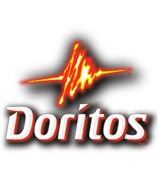
Section 2: Brand Image, Logo, Name & Packaging
1. Brand Name
A corporate name is the overall banner under which all other operations occur. What type of corporate name are your choosing: Explain which type of name category your product/service falls under and why.
Overt names reveal what the company does (American Airlines, BMW Motorcycles).
Implied names imply what the company is about (Federal Express, IBM).
Conceptual names imply the essence of the brand (Google, Krispy Kreme).
Iconoclastic names do not reflect the company's goods or services (Apple, Monster.com).
2. Logo
Quality logos and corporate names should pass four tests, design a logo for your product/service
Draw using colored pencils/pens or on the computer design what your logo will look like. (I am not grading on artistic ability, but rather effort)
a. What components of your logo make it easily recognizable?
b. What part of your logo makes it familiar to your target market?
c. What consensual meaning among those in the firm’s target market does your logo elicit?
d. What type of positive feelings does your logo convey?
3. Developing a Strong Brand
Developing a strong brand begins with discovering why consumers buy a brand and why they re-purchase the brand. Answer the following questions about your brand. Answer the following questions?
a. What are the brand's most compelling benefits?
b. What emotions are elicited by the brand either during or after the purchase?
c. What is the one word that best describes the brand?
d. If your brand were a car, animal, instrument, color, & music group what kind would it be?
e. What is important to consumers in the purchase of the product?
4. Packaging
A unique package and label can help sell a product, build brand recognition, and inspire repeat purchases. Draw and describe what your packaging will look like.
a. Explain how your package design takes advantage of new trends, including:
- Meet consumer needs for speed, convenience, and portability
- Must be contemporary and striking
- Must be designed for ease of use
- Packages must be eye-catching and contemporary.
5. Labels
a. What does your packaging label look like. Draw an example.
Labels must: Meet legal requirements· Point out distinguishing features of the product
Help lead to the purchase -
1. Brand Name
A corporate name is the overall banner under which all other operations occur. What type of corporate name are your choosing: Explain which type of name category your product/service falls under and why.
Overt names reveal what the company does (American Airlines, BMW Motorcycles).
Implied names imply what the company is about (Federal Express, IBM).
Conceptual names imply the essence of the brand (Google, Krispy Kreme).
Iconoclastic names do not reflect the company's goods or services (Apple, Monster.com).
2. Logo
Quality logos and corporate names should pass four tests, design a logo for your product/service
Draw using colored pencils/pens or on the computer design what your logo will look like. (I am not grading on artistic ability, but rather effort)
a. What components of your logo make it easily recognizable?
b. What part of your logo makes it familiar to your target market?
c. What consensual meaning among those in the firm’s target market does your logo elicit?
d. What type of positive feelings does your logo convey?
3. Developing a Strong Brand
Developing a strong brand begins with discovering why consumers buy a brand and why they re-purchase the brand. Answer the following questions about your brand. Answer the following questions?
a. What are the brand's most compelling benefits?
b. What emotions are elicited by the brand either during or after the purchase?
c. What is the one word that best describes the brand?
d. If your brand were a car, animal, instrument, color, & music group what kind would it be?
e. What is important to consumers in the purchase of the product?
4. Packaging
A unique package and label can help sell a product, build brand recognition, and inspire repeat purchases. Draw and describe what your packaging will look like.
a. Explain how your package design takes advantage of new trends, including:
- Meet consumer needs for speed, convenience, and portability
- Must be contemporary and striking
- Must be designed for ease of use
- Packages must be eye-catching and contemporary.
5. Labels
a. What does your packaging label look like. Draw an example.
Labels must: Meet legal requirements· Point out distinguishing features of the product
Help lead to the purchase -
